Garage Centre for Contemporary Culture by Shigeru Ban
While OMA is busy finalising designs for a new home for the Garage Centre for Contemporary Culture in Moscow, the arts organisation has temporarily moved into a pavilion with cardboard columns by Japanese architect Shigeru Ban (+ slideshow).
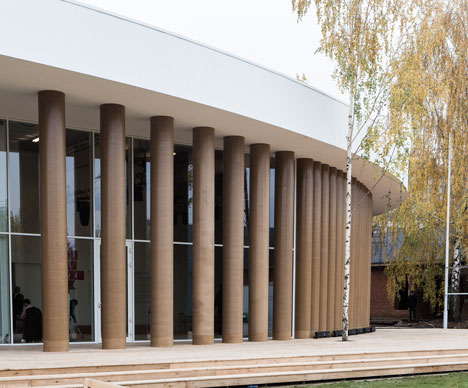
Garage will occupy the pavilion during the entire construction period, which will see a 1960s building in Stalinist-era Gorky Park renovated into an exhibition centre with moving walls and floors.
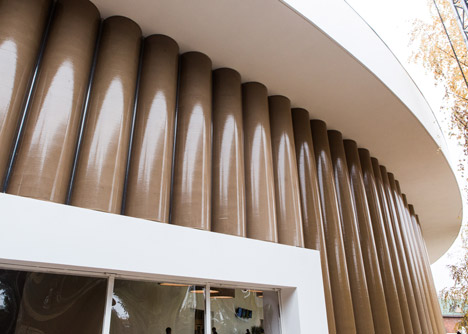
Ban's oval-shaped pavilion is located in the same park and has chunky cardboard columns surrounding its entire perimeter.
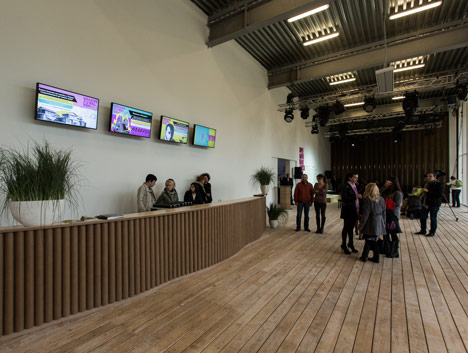
"The construction of the temporary pavilion is both efficient to construct and affordable by using local materials produced in St. Petersburg," said Shigeru Ban.
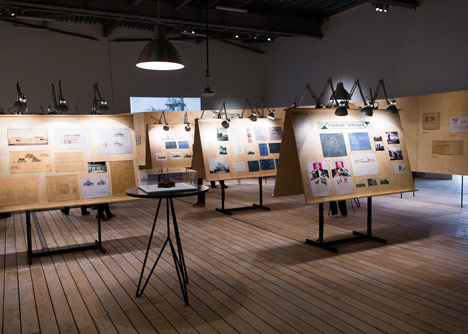
Discussing his decision to work on the project, Ban explained: "I was interested in working in Russia first and foremost because of Russia’s culture, architecture, music and art and due to its geographic connections with Japan. Although Russia and Japan are neighbours, we have very different cultures."
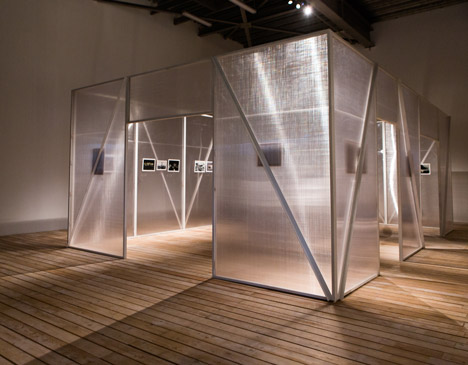
A single rectangular exhibition space is contained inside the building, alongside a bookshop and cafe.
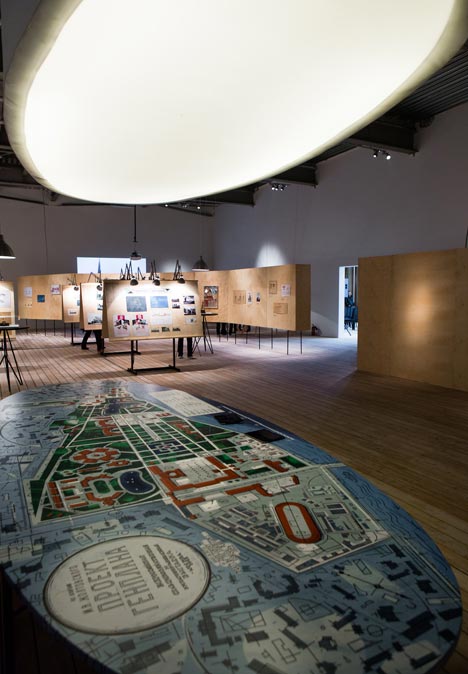
In late 2013 Garage will relocate to their new building and the pavilion will then be used for experimental projects.
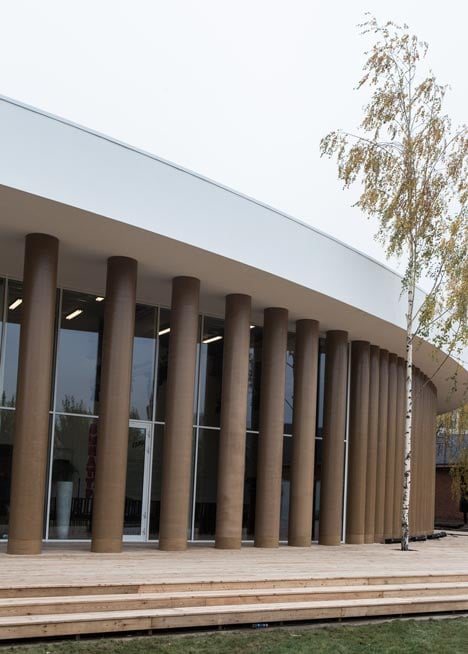
The inaugural exhibition, entitled Temporary Structures in Gorky Park: From Melnikov to Ban, focusses on the history of temporary pavilions in the park, which was planned in the 1920's by Konstantin Melnikov.
Find out more about OMA's design for the Garage Centre for Contemporary Culture in our earlier story, or hear about it in our interview with Rem Koolhaas.
Shigeru Ban has created a few structures using cardboard, including a temporary tower and a tea house.
See all our stories about Shigeru Ban »
Here's some more information about the exhibition:
Garage Center for Contemporary Culture will present a new exhibition entitled Temporary Structures in Gorky Park: From Melnikov to Ban from 20 October to 9 December 2012 in a newly created temporary pavilion in Moscow’s Gorky Park, designed by Japanese architect Shigeru Ban. Showing rare archival drawings –many of which have never been seen before – the exhibition will begin by revealing the profound history of structures created in the park since the site was first developed in 1923, before moving through the Russian avant-garde period to finish with some of the most interesting contemporary unrealized designs created by Russian architects today.
By their nature, temporary structures erected for a specific event or happening have always encouraged indulgent experimentation, and sometimes this has resulted in ground-breaking progressive design. This exhibition recognizes such experimentation and positions the pavilion or temporary structure as an architectural typology that oscillates between art object and architectural prototype. In Russia, these structures or pavilions – often constructed of insubstantial materials – allowed Soviet architects the ability to express the aspirations of the revolution. They frequently became vehicles for new architectural and political ideas, and they were extremely influential within Russian architectural history.
This exhibition reveals the rich history of realized and unrealized temporary structures within Moscow’s Gorky Park and demonstrates important stylistic advancements within Russian architecture. Temporary Structures also reveals the evolution of a uniquely Russian ‘identity’ within architecture and the international context, which has developed since the 1920s and continues today.